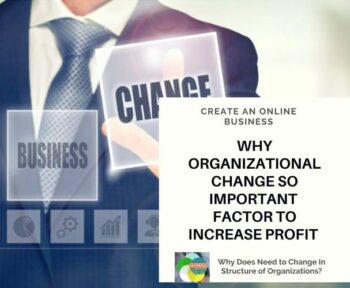The modern corporate landscape is one of the primary drivers of organizational change at an unprecedented degree. Because of the quickening speed of technological progress in particular, organizations are being put in the position where they need to regularly monitor the transition to new processes and procedures.
The process of managing organizational change comprises monitoring and facilitating change at every level in the organization where it is required. For instance, it might be at the level of a team or project, or it might pertain to a work procedure or system. Organizational change management is implemented within companies when the intended change calls for alterations to be made at the structural level as opposed to the project level.

Change within an organization requires a method that is both systematic and individualized. The UNITE Horizons of Growth framework provides you with detailed information regarding the timing and methodology of any business-related improvements, transformations, or innovations.
It is therefore normal to be resistant to changes in the workplace. Alteration can be terrifying; it can be overwhelming; it forces one out of their established routine and comfort zone. And this is because you are aware of the comfortable environment in which you wish to live for the rest of your life and in which you intend to continue carrying out activities in the same manner in which you have always carried them out.
However, there is benefit to be gained from organizational reform. In this piece, we will investigate the reasons why organizational transformation might lead to favorable results. We will also describe the types of changes that are expected to occur, as well as the reasons why these changes may be beneficial to the firm that you work for.
Within the spectrum of what you consider organizational change and development, some may happen more frequently, while others arise from organic growth. In spite of this, the importance of both cannot be overstated when it comes to expanding your consumer base in the current market climate.
So why is it so vital for organizations to adapt? First and foremost, organizational reform has a favorable impact on the overall operation of the company. Management of organizational change fosters creativity, fosters the development of skills and people, results in improved business prospects, and boosts morale.
Adjusting To The Changes In The Organization
Because it requires us to deviate from our established routines and experiment with novel modes of functioning, organizational change has the potential to make us feel uneasy. Adapting to organizational change is typically tough since it’s too simple to keep acclimated to our routines, standards, and values. Nevertheless, change is an essential component of many elements of both our working lives and businesses.
Companies that are resistant to organizational change run the risk of becoming complacent and failing to advance. Our modern world is continually growing in technology, as well as in many more demanding but innovative ways. The development of both the organization as a whole and its individual personnel will result from the ability to meet these new difficulties head-on.
What Are The Consequences For Organizations Who Refuse To Change?
The company as a whole, as well as the workers who work there, stand to gain a great deal from organizational change, despite the fact that it may be challenging to implement.
A stale working environment is something that can be chosen by companies that are either unwilling to change their approach to doing business or are unwilling to change their current strategy.
This environment is incapable of accommodating fresh opportunities, including imaginative concepts (ideas that may lead to an overall improved operation or a new product or service).
Ignoring the need to adapt can put a company in a precarious position, but being creative and innovative, as well as having the ability to shift the focus of your organization, can open the door to numerous promising new business options.
Reasons Behind Organizational Development And Change

There are many distinct reasons why organizational change and development take place. The following are some justifications for the implementation of organizational change management.
Financial Crisis.
It is abundantly clear that the global economic crisis of 2008 left an indelible effect across a variety of industries, particularly the airline and tourism sector. Because of the ongoing financial crisis, many businesses were forced to make difficult financial decisions in order to continue operating. As a result, these decisions opened the door for organizational transformation and development. As a result, one of the primary causes that induce the need for organizational change management as well as organizational change and growth is the recent financial crisis.
Discrepancies in Performance
The majority of the time, this happens when the goals and objectives of the organization are not realized, or when other needs of the business are not adequately supplied. To bridge these gaps, there needs to be a shift in the culture of the business, which can only be accomplished through organizational reform.
The Latest in Technology
The introduction of innovative technology in a certain sector can result in structural shifts in that sector’s organizations. In most cases, this results in methods of carrying out responsibilities that are more productive while simultaneously reducing costs.
The Spotting Of Potential Advantages And Advantages.
It has been determined that there are opportunities in the market that the organization must pursue in order to raise its level of competitiveness.
A Response To Both The Internal And The External Pressures
Management and management, particularly those in more organized settings, frequently exert pressure for changing organizational culture. Pressure from the organization’s external environment can come from a variety of sources, including customers, shifting government regulations, competition, shareholders, and financial markets.
Mergers And Acquisitions.
When two companies combine their operations, it is not uncommon for some of the employees to lose their jobs as a result of the merger. This is especially true in situations when employees have dual responsibilities within the firm. It’s possible that the organization you work for is trying to reduce its costs, or perhaps it wants to reallocate some of its funds or resources to something different. At this point, this might take the shape of mergers and acquisitions. On the other side, it can be necessary to cut the number of employees or change the way that they do their jobs.
Modify Things Only For The Sake Of Altering Them.
A company will frequently name a new chief executive officer (CEO) or head of a department. After that, in order to demonstrate to the board of directors that they are actually taking action, they will propose organizational transformation and development.
Organizational Development And Transformation That Has Been Planned.
The process of giving up on goods, markets, or subsidiaries in order to reallocate resources toward innovation and the pursuit of new opportunities can result in organizational restructuring.
Alterations To The Structure.
Remember when you had to go to work in the year 2019? You went to bed early and woke up early to get ready for work. You leave for work between 8 and 9 in the morning and return between 5 and 6 in the evening. This narrative appears to be irrelevant in light of the fact that COVID 19 altered everything.
Today, the majority of people do their jobs from the confines of their own homes, rather than going into an office. A growing number of businesses are advocating the use of employee rotation as part of their innovation strategy. The flexibility that employees so desperately seek is provided by this kind of organization. Significant shifts are reshaping the culture of the firm, as well as employee engagement and the way work is carried out.
Alterations In The Population
There are currently five distinct generations represented in the labor force, a first in the annals of human history. The dynamics of the workplace have been significantly altered as a result of the inclusion of diverse opinions. To foster creativity, build cohesive and productive teams, and prepare for the workplace of the future, it will be vital to have an understanding of the multigenerational nature of the workplace and the ramifications that come with it.
Alterations To The Product And The Service
You could need to take immediate action in response to anything as basic as a product or service that your company provides reaching its end of life, or in response to a decrease in the demand that the market has for a certain product. At this stage, it’s possible that you’ll need to shift your attention to a different product or service, which may call for fresh ways of thinking creatively or simply the transfer of labor to the new product’s primary focus.
Changes To An Organization’s Structure Can Take Place In A Number Of Different Areas.
Alterations and developments in an organization are able to take place in the following areas:
When it comes to their mission, vision, and strategy, companies should always be asking themselves, “where is our business heading, and where are we currently?” The responses to these questions may lead to organizational change management in the form of revisions to the company’s mission (i.e., the reason why the company exists), its vision for the future, and its digital business strategy.
Technology: Businesses have the ability to make changes to their technology, such as the method by which they produce whatever it is that they offer, in order to improve their efficiency and reduce their costs.
Changes in human behavior include: providing on-the-job training to managers and employees in order to teach new information and skills; alternatively, people can be replaced or the workforce can be shrunk. A good illustration of this is the financial crisis of 2008, which caused many businesses to reduce their workforces, resulting in an unprecedented level of unemployment that persists to this day.
Task-job design refers to the process of altering the manner in which work is carried out inside an organization by implementing new procedures and methods.
Changing the culture of a business necessitates a shift in management and leadership methods, as well as in the values and beliefs upheld by the firm. This has a significant bearing, to a greater extent than usual, on the overall functioning of the organization.
These are the primary aspects of organizations that are susceptible to change. It is essential to keep in mind, however, that changes made in one of these areas will typically have an effect on the other areas. For instance, if organizational culture or technology is altered, this may necessitate changes in the human-behavioral areas, such as the acquisition of new knowledge, skills, and abilities regarding how to make use of technology.
Why Is It So Important For Organizations To Change?
The businesses that are better able to adjust to changes that take place as a result of natural processes are likely to be the ones that are the most successful after implementing a “positive change strategy” to achieve their goals.
The following is a list of some of the advantages of organizational change:
Encourages Innovation.
Companies run the risk of falling behind the curve and losing ground in comparison to their competitors if they do not make changes to their organizational structures. They have to undergo transformation and become more flexible in order to stay up with the rapidly advancing technology landscape and evolving times.
In an ideal world, businesses would be able to move and adapt seamlessly. Inflexible working conditions have the potential to stifle creativity, which is essential for the development of new ideas. It is necessary for businesses to develop procedures, policies, products, or services that are relevant in the present and will have market value in the future.
Promotes Skills Growth
The capability of an organization to foster the development of new talents and areas of expertise will assist the entire company, including its employees, in becoming much more well-rounded and competent as members of a team. Employees that consistently carry out the same tasks will never have the opportunity to demonstrate their capabilities or learn anything new that they can contribute to the organization.
If someone does the same thing day in and day out, after year after year, they will never learn anything new. Growth and development of skills are inevitable outcomes of organizational transformation, as are shifts in organizational culture. Employees will be coerced into acquiring new knowledge and abilities in order to keep them competitive in the ever-evolving labor market.
People Development.
Despite the fact that it is often challenging to convince staff members to accept change, those who are able to do so with a positive attitude will benefit far more from working with new tactics in terms of their own personal growth. Employees who are able to recognize the positive aspects of change are frequently the most valuable to a company. Not only will these workers experience personal growth, but they will also create circumstances in which the firm will automatically expand alongside them.
New Opportunities.
Businesses will always have an easier time discovering and cultivating new business possibilities and ideas if they have the ability to accept and welcome change. Any company that wants to advance into new areas that have been made possible by new ways of working should ensure that they have excellent transition strategies. This may be accomplished by forming partnerships with other businesses in order to expand, or it could simply be accomplished by making new contacts, which would result in increased sales.
Conclusion.
Changes in organizational structure are essential to the success and expansion of businesses. Within a company, the successful adoption and utilization of change are directly attributable to change management. It enables the workers to comprehend the shift, allowing them to effectively commit to it and work.
Transitions inside a corporation have the potential to be difficult and costly in terms of both time and resources if proper organizational change management is not implemented. They have the potential to impair employee morale and contribute less to the development of competent skills. In the end, the organization may not be successful because it does not have good change management.
FAQs
The implementation of a new strategy is the primary motivation for the restructuring of a firm. A strategy lays out a plan that establishes how a company will use its key resources to fulfill its strategic objectives. This plan is what is meant by the term “strategic objectives.”
The implementation of certain organizational changes may necessitate extensive reorganization, which may force a number of workers to make fundamental adjustments to their lives. Typical shifts that have a negative impact on some of the workforce include reductions in pay or benefits, demotions to lower-level positions, termination of employment, or transfers to a different location within the same city, state, or even another country.
The management of the people side of a change is frequently the most difficult and essential component of an organizational transformation, despite the fact that it is commonly referred to as the “soft side” of change.
One study found that employees who had just gone through a change in their working environment were more than twice as likely to report feeling chronic stress compared to employees who did not have any present or projected changes on the horizon. In addition, there was a fourfold increase in the likelihood that they would develop physical stress symptoms while at work.









